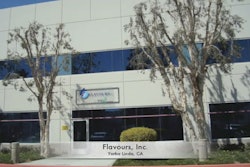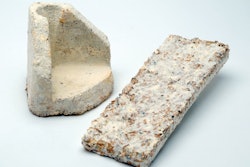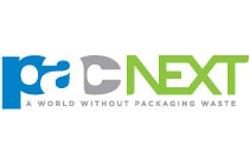
The Material Handling Equation is Material + Move = Method: consider the characteristics of the material, along with the characteristics of the move, in order to choose a method for moving the material. Although it will never be awarded a place alongside E=MC², it holds its own when it comes to conciseness and breadth of application.
Packaging and material handling are two disciplines linked by the Unit Load Principle: the larger the unitized load the less the cost-per-item to move that load. The size of the unitized load is limited by the lift capacity of the material handling equipment, in addition to other practical constraints, some imposed by transportation and storage.
The interrelationship between packaging and material handling extends beyond the Unit Load Principal, however, and by understanding and utilizing the Material Handling Equation a packaging professional can improve the efficiencies and costs of the material flows within a facility. Wait, aren't those the responsibilities of material handling engineers, plant engineers, and the like? Conceded. But the mindset should be one of teamwork rather than encroachment. Besides, overlap is inevitable, for within a facility, the flows among receiving, in-coming storage, production (including the packaging line), out-going storage, and shipping are affected by the amounts and types of packaging.
Despite the kinship, there is a fundamental distinction between packaging and material handing; namely, packaging adds value, material handling doesn't. Although packaging adds multiple values, one deserves special mention: possession value. Packaging allows the consumer to possess (and use) the product. In contrast, material handling adds no value; the number of times that the product is handled doesn't result in proportional increases in value, although costs unquestionably increase.
The cost factor can be put in perspective by noting that in the typical facility more than one-half of total production cost, one-third of direct labor cost, and at least one-third of indirect labor cost are attributable to material handling. It therefore follows that material handling not only should be minimized but eliminated in those instances in which the move proves unnecessary. Analysis is required in order to make either of those determinations and the analytical tool is the Material Handling Equation.
Material
The first question always should be, why move the material at all?
If, indeed, the material needs to be moved, the next question is what is the material? The type of material, whether powder, granular, liquid, bulk, discrete, etc. has to be taken into account, as does the involved quantities. Also to be considered are the characteristics of the material, its fragility, for example.
Move
Where is the material to be moved? The layout of the facility has a strong influence on how direct a path between points a move can proceed. Backtracking should be avoided to the extent possible. The path need not be limited to floor level, either, for there are times when an overhead path makes the best sense. Thought also should be given to subsequent stops. For example, if material is to be moved to point A, only to be moved later (unchanged) to point B, the practicality of moving to B without having stopped at A ought to be evaluated. As for the type of move, two major categories are intermittent and continuous.
When the move is to be made matters because material should be where it's needed at the time that it's needed; otherwise, operations are subject to disruptions, with concomitant losses in productivity.
Method
Now it comes down to how the move is to be made. There are two options: manual and mechanical, although some methods, such as a non-powered pallet jack, are a combination of both. Material handling equipment constitutes a wide variety of choices: trucks, conveyors, cranes, hoists, etc. with various sources of power and various levels of automation. That fact introduces considerations related to other areas such as ergonomics and investment.
Finally comes who is to make the move; for, even in a supposed fully-automated operation, there has to be a human element that monitors and oversees. The method, therefore, affects the level of training and the overall skill levels required of material handling employees.
Flows are increasing
Armed with an understanding of the Material Handling Equation, packaging professionals will never want for opportunities to apply it. They need but tour a facility with an attentive eye and a questioning mind. Plus, there'll be those opportunities occasioned by projects that are directly related to packaging, for example, the installation of a new packaging line or the integration of a new piece of equipment into an existing packaging line.
And as it's doing with practically all facility operations, sustainability is influencing material flows, adding to them. An example is the waste destined to be recycled. How the waste is collected, unitized, and sent out can benefit from the Materials Handling Equation, in general, and the Unit Load Principle, in particular. On a related note, product stewardship can further add to material flows, given its central theme of Extended Producer Responsibility (EPR) which extends the producer's responsibility to post-consumer management of the product and packaging.
The interdependence between packaging and material handling is reflected in the organization The National Institute of Packaging, Handling & Logistics Engineers, although the focus is geared to heavy industry and government. There use to be a Society of Packaging and Handling Engineers that was more geared to the CPG industries; however, it merged with the Packaging Institute to form the Institute of Packaging Professionals. No matter, there's no denying that in the CPG industries, neither packaging nor material handling can be performed one to the exclusion of the other.
No, the Material Handling Equation is not the Theory of Relativity. In fact, it's not theoretical, at all. Rather, its everyday practicality has been proven countless times over. And that's an attribute that might have caused even Einstein himself no little envy.
Sterling Anthony is a consultant, specializing in the strategic use of marketing, logistics, and packaging. His contact information is: 100 Renaissance Center- Box 43176; Detroit, MI 48243; 313-531-1875 office; 313-531-1972 fax; [email protected]; www.pkgconsultant.com.

























